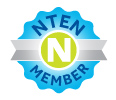I wrote a post in 2006 about CiviCRM's weaknesses. With the upcoming CiviCRM 3.0 release (try it out), I thought I would revist those weaknesses and see if I could add some more.
1. Ecology. The ecology is now mature enough to support virtually any size customer.
http://civicrm.org/professional (support the active contributors!)
2. Documentation. Online docs done by the esteemed John Kenyon and just released a CiviCRM book! I think the documentation is certainly on par with anything out there.
3. Donor Management. Pledges, soft credits and user configurable LYBUNT reports, what more can anyone want? (there are some things, but the basic functionality in now all present)
According to my criteria, CiviCRM has long surpassed the sustainability tipping point:
- Lots of competant consultants are avaliable.
- Nonprofits can pay for hosted CiviCRM or an install.
- Documentation and online training is avaliable.
- People are extending CiviCRM and contributing back. Go CiviCase!
So what are the weaknesses now? Since the CiviCRM team moves very rapidly, many of the key weaknesses are getting addressed in the 3.0 release... I probably should do this post yearly.
- Usability. This was a recent bug-a-boo that the CiviCRM team took a big swing at in the 3.0 release. The new navigation bar is pretty much to die for. The configuration checklist that makes setting up a new site a snap is underadvertised and perhaps underappreciated. Oh, and the recent items list is a basic but import feature. There is still room for improvement, but CiviCRM is certainly now on par with any competitive piece of software.
- Reporting. The new CiviReport framework addresses the basic reporting gaps and allows the community to fill most remaining reporting gaps.
- Donor management gaps. Things like postal mail merge are not tightly integrated into the application or into the CRM history. Prospecting and proposals have yet to be addressed directly.
- Accounting integration. This need to be smoothed out and improved. And the community is already on it.
- Volunteer management. Not sure this is a weakness, per se, it just hasn't been a priority.
And other things people can add to the comments.
Overall, the 3.0 release represents the end of fundimental gaps in the utility of CiviCRM for most nonprofits.

